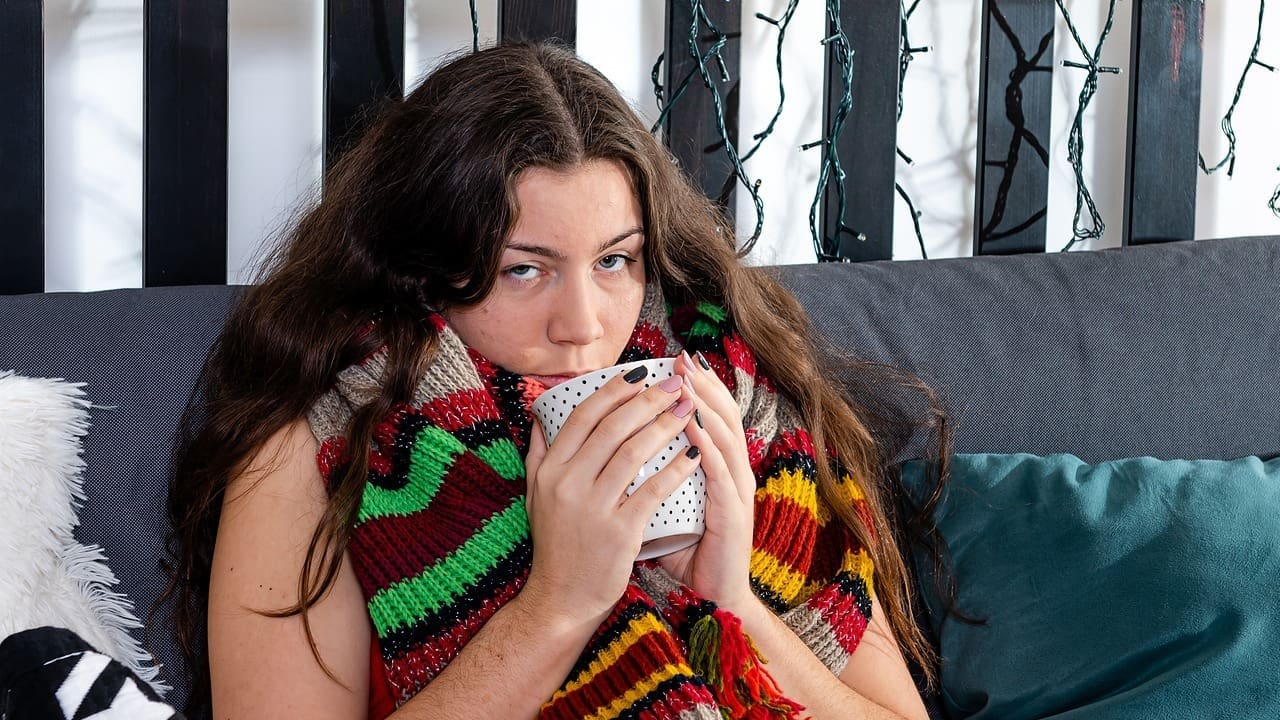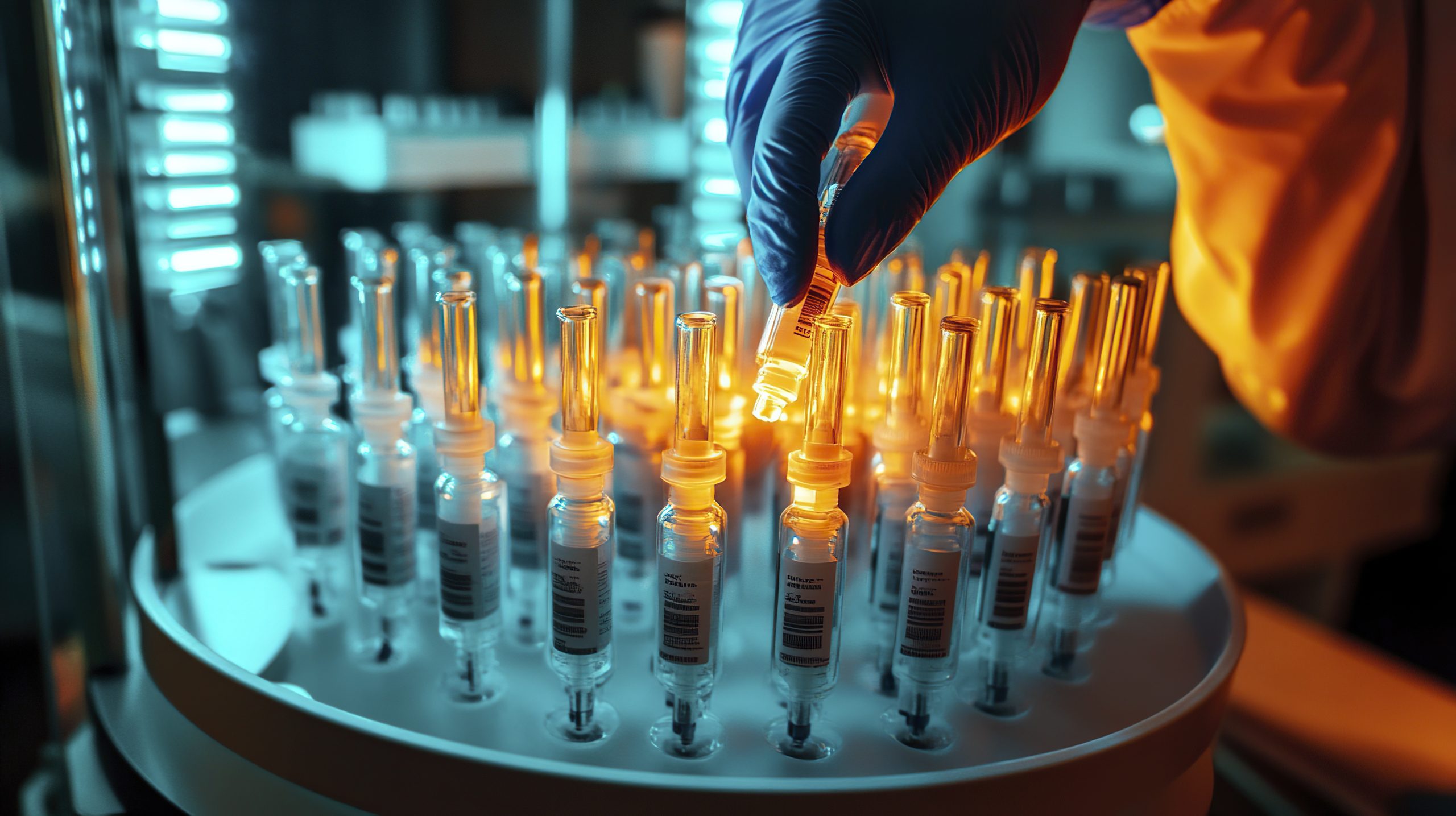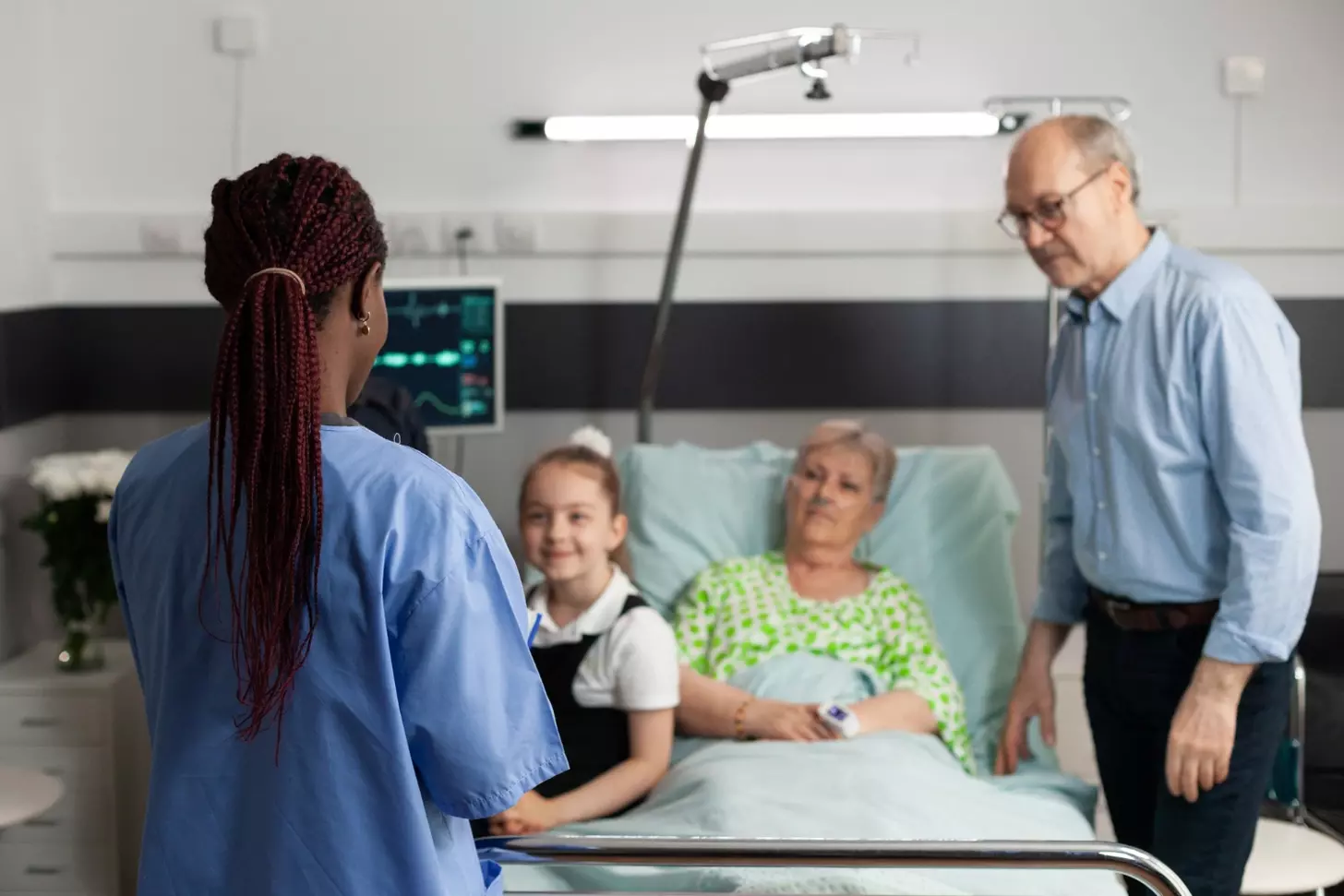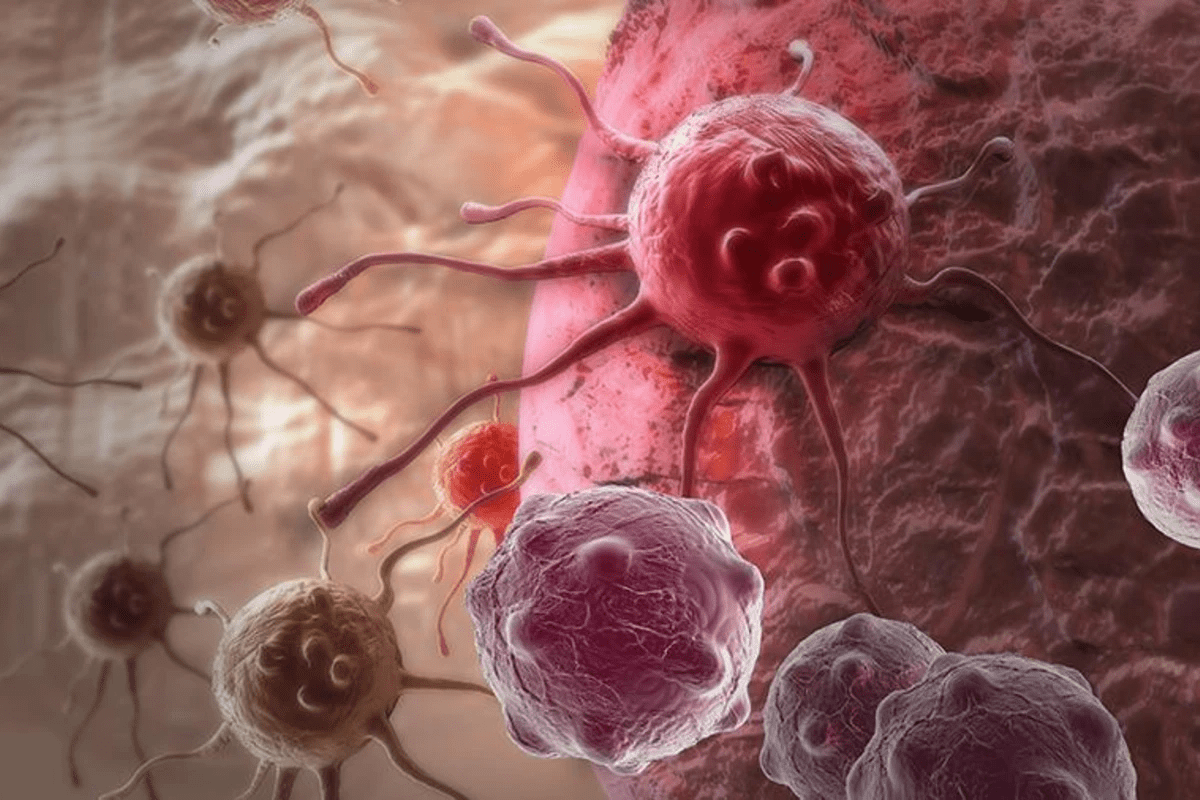Last Updated on November 27, 2025 by Bilal Hasdemir

Patients with carcinoma face not just the disease but also the side effects of cancer meds. These can really hurt their quality of life. Up to 80% of patients have some kind of adverse reaction to their treatment. It’s key to manage these issues well.
At Liv Hospital, we know how important it is to care for the whole person. We focus on both the physical and emotional challenges of cancer treatment. Our approach is all about the patient, helping them deal with the tough parts of treatment.
Knowing the common side effects of cancer treatment helps us find ways to manage them. This way, we can improve how patients feel and do better overall.
Key Takeaways
- Carcinoma treatment side effects are common, affecting up to 80% of patients.
- Managing side effects is key to keeping a good quality of life during treatment.
- Liv Hospital’s patient-centered approach offers full care for international patients.
- Good management strategies can really help patients do better.
- It’s vital to understand the complex nature of cancer treatment for the best care.
Understanding Different Cancer Treatments and Their Effects
It’s important for patients to know about the various cancer treatments. Each therapy has its own benefits and side effects. This knowledge helps patients make informed decisions about their care.
Chemotherapy, Immunotherapy, and Targeted Therapies
Chemotherapy, immunotherapy, and targeted therapies use drugs to fight cancer. Chemotherapy targets fast-growing cells. Immunotherapy boosts the immune system to fight cancer. Targeted therapies aim at specific molecules that help cancer grow.
- Chemotherapy can cause side effects like hair loss and nausea.
- Immunotherapy can lead to immune-related side effects.
- Targeted therapies may cause skin rashes or diarrhea.
Radiation and Surgical Interventions
Radiation therapy kills cancer cells with high-energy rays. Surgical interventions remove tumors. Both can have side effects based on where and how they are used.
For example, radiation to the head and neck can cause dry mouth and trouble swallowing.
Hormone Therapy Approaches
Hormone therapy treats cancers driven by hormones, like some breast and prostate cancers. It blocks or interferes with hormones.
How Side Effects Develop and Vary Between Treatments
Side effects happen because treatments affect both cancer cells and healthy cells. The severity and type of side effects differ between treatments and patients.
For instance, chemotherapy can cause widespread side effects. Radiation therapy’s effects are more localized.
Carcinoma Treatment Side Effects: Overview and Prevalence
It’s key for patients to know about carcinoma treatment side effects. These side effects can greatly affect a patient’s life. Understanding them helps manage them better.
How Many Patients Experience Side Effects
Studies show that 80% of cancer patients face side effects. The severity and type vary based on treatment and patient health. This highlights the need for strong support and management.
Temporary vs. Long-Term Effects
Side effects from carcinoma treatment can last a short time or longer. Short-term effects usually go away after treatment ends. Long-term effects need ongoing care. Knowing this helps patients plan better.
Individual Risk Factors
Factors like health, age, and treatment type affect side effect risks. Personalized care is key to reducing these risks.
Working With Your Healthcare Team
Managing side effects well needs teamwork with your healthcare team. Together, you can create a plan to lessen side effects. Patients should talk openly with their doctors about any issues.
Managing Fatigue and Energy Depletion
Managing fatigue is key for cancer patients to keep up with daily life and feel good. Fatigue is a common side effect of cancer treatment. It affects patients physically, emotionally, and mentally.
Why Cancer Treatments Cause Fatigue
Cancer treatments like chemotherapy, radiation, and surgery can cause fatigue. They can build up toxins, lead to anemia, or change hormones. This can make patients feel very tired. The National Cancer Institute says fatigue is a common side effect, affecting almost all patients.
Energy Conservation Techniques
To fight fatigue, patients can use several techniques. They can focus on important tasks, take breaks, and pace themselves. By doing so, they save energy. They can also make their environment comfortable and use devices to help with physical tasks.
Exercise and Nutrition Strategies
Gentle exercise, like walking or yoga, can boost energy. Eating a balanced diet is also key. Foods high in protein, complex carbs, and healthy fats help produce energy. Drinking plenty of water is also important. For specific advice, patients should talk to their healthcare provider.
When to Seek Additional Medical Support
If fatigue is very bad or affects daily life, patients should get more medical help. Doctors can offer tips on managing fatigue and suggest treatments. Understanding cancer-related tiredness is important, as Liv Hospital explains.
By knowing why fatigue happens and using energy-saving strategies, patients can handle this tough side effect of cancer treatment better.
Digestive System Complications and Solutions
Cancer treatments can really mess with your digestive system. This can lead to many problems. These issues can affect how well you eat and how you feel overall.
Nausea and Vomiting Management
Nausea and vomiting are big issues for people getting cancer treatment. This is true for both chemotherapy and radiation. Managing these symptoms is key to avoid dehydration and not getting enough nutrients. We suggest a mix of medicine and making some lifestyle changes.
Medicines can help a lot with nausea and vomiting. Also, eating small meals often and avoiding foods that smell strong can help a lot.
Addressing Diarrhea and Constipation
Diarrhea and constipation are big problems for cancer patients. Diarrhea can cause dehydration and mess with your body’s balance of salts. Constipation can make you uncomfortable and even block your bowel.
To deal with diarrhea, drink lots of water and eat simple foods. For constipation, try eating more fiber and moving around more.
Mucositis (Mouth Sores) Prevention and Treatment
Mucositis is when your mouth’s lining gets inflamed, causing painful sores. Keeping your mouth clean is key to prevent and treat it.
Dietary Modifications for Symptom Relief
Changing what you eat can really help with digestive problems. For nausea, try eating foods like crackers or toast. For diarrhea, eat foods low in fiber.
To help with mucositis, avoid foods that are spicy or acidic. Drinking plenty of water is important for all these issues.
Understanding and tackling these digestive problems can help patients feel better during cancer treatment. It can make a big difference in their quality of life.
Skin, Hair, and Nail Changes During Treatment
Cancer treatment can cause changes in skin, hair, and nails. These changes can affect how you look and how you feel about yourself. But, there are ways to handle these changes well.
Managing Hair Loss and Scalp Care
Hair loss is common with treatments like chemotherapy and radiation. To deal with it, use soft hair products and stay away from harsh chemicals. You might also want to try wigs or scalp cooling devices.
Treating Skin Reactions and Rashes
Skin reactions and rashes can happen from radiation and some medicines. Use mild skin products and avoid things that might irritate your skin. Your doctor might suggest creams or ointments for these issues.
Nail Protection Strategies
Nails can become brittle or change color during treatment. To protect them, keep your nails short and avoid harsh chemicals. Also, wear gloves when doing dishes or cleaning.
Body Image Support and Resources
Appearance changes can affect how you see yourself. There are resources like counseling and support groups to help. They can make it easier to cope with these changes.
| Change | Management Strategy |
|---|---|
| Hair Loss | Gentle hair care, scalp cooling, wigs |
| Skin Reactions | Gentle skin care, topical creams, avoid irritants |
| Nail Changes | Keep nails trimmed, avoid harsh chemicals, wear gloves |
Knowing about the possible changes and how to manage them can help. It lets you keep a positive view of yourself, even during treatment.
Blood-Related Side Effects and Their Management
Cancer treatment can affect the blood, causing issues like anemia and a higher risk of infections. These treatments target cancer cells but can also harm the bone marrow. This makes it harder for the body to make healthy blood cells.
Anemia: Symptoms and Treatments
Anemia means you have fewer red blood cells, leading to tiredness, weakness, and shortness of breath. Treatments for anemia include iron supplements, blood transfusions, or drugs to help make more red blood cells. We watch patients’ red blood cell counts to find the best treatment.
Neutropenia and Infection Prevention
Neutropenia happens when you have fewer neutrophils, making you more likely to get infections. To prevent infections, we teach patients to wash their hands often, stay away from sick people, and sometimes use antibiotics. We also teach them how to prevent infections and manage neutropenia.
Thrombocytopenia and Bleeding Risk
Thrombocytopenia means you have fewer platelets, which can cause bleeding. To handle thrombocytopenia, we might suggest platelet transfusions or drugs to increase platelet production.
Monitoring Blood Counts During Treatment
Regular blood tests are key to tracking blood counts and spotting problems early. “Monitoring helps us adjust treatment plans to lower the risk of blood-related side effects.” By watching blood counts closely, we can quickly help manage side effects.
Understanding and managing blood-related side effects is vital in cancer care. Knowing the risks and taking action early can help patients through their treatment.
Neurological and Cognitive Side Effects
It’s important to understand the side effects of cancer treatment on the brain and nerves. These treatments save lives but can greatly affect a patient’s life quality.
Peripheral Neuropathy: Prevention and Management
Peripheral neuropathy is a common side effect of some cancer treatments. It damages nerves, leading to pain, numbness, and weakness. Prevention strategies include managing chemotherapy doses and using protective medications. To manage it, doctors use pain relief, physical therapy, and alternative treatments like acupuncture.
We advise patients to talk to their doctors about their treatment plans. This can help lower the risk of peripheral neuropathy.
Cognitive Changes and “Chemo Brain”
Many patients face cognitive changes, known as “chemo brain.” Symptoms include memory loss, trouble focusing, and confusion. Cognitive rehabilitation and training programs can help. Patients should also keep their minds active and live a healthy lifestyle.
Headaches and Sleep Disturbances
Headaches and sleep problems are common side effects. A mix of medication, relaxation techniques, and lifestyle changes can help. Relaxation techniques like meditation and deep breathing are very helpful.
Rehabilitation Options and Cognitive Exercises
Rehabilitation is key in managing these side effects. Cognitive exercises, physical therapy, and occupational therapy can greatly improve patients’ lives. They help with daily functions and overall well-being.
We encourage patients to explore these options with their healthcare team. This way, they can create a plan that fits their needs.
Emotional and Psychological Impact of Cancer Treatment
Cancer treatment is tough, affecting patients in many ways. It’s not just physical; it also hits hard emotionally and psychologically. The emotional and psychological effects can be as big a challenge as the physical ones.
Anxiety and Depression During Treatment
Anxiety and depression are common in cancer patients. These feelings can really affect how well a patient can handle treatment. They can make life harder and make it tough to cope.
It’s key to tackle these issues with the right support and therapy early on. This can help manage symptoms and improve how well patients do.
Mood Changes from Hormone Therapies
Hormone therapies used in some cancer treatments can cause mood swings. These can be anything from feeling a bit short-tempered to serious depression or anxiety.
Support Resources and Therapy Options
It’s vital for patients to have access to support and therapy for the emotional and psychological effects of cancer treatment. This includes counseling, support groups, and sometimes medication for anxiety and depression.
Involving Family and Caregivers
Getting family and caregivers involved in support can be really helpful. They can offer emotional support, help with daily tasks, and make it easier to talk to doctors.
| Support Resource | Description | Benefits |
|---|---|---|
| Counseling | One-on-one or group therapy sessions | Emotional support, coping strategies |
| Support Groups | Group meetings for patients and families | Community, shared experiences |
| Medication | Pharmacological interventions for anxiety and depression | Symptom management |
Conclusion: Building Your Personalized Side Effect Management Plan
Carcinoma treatment side effects can be tough, but they can be managed. We stress the need for personalized care in cancer treatment. This way, patients get support that fits their specific needs.
Knowing the side effects of treatments like chemotherapy and radiation helps patients prepare. Managing side effects well involves several strategies. These include relaxation training, keeping a routine, exercising, and using memory aids.
It’s key to work closely with healthcare teams to create a personalized plan. This team effort helps patients meet their unique needs. It ensures they have the best quality of life during and after treatment. With personalized care and proactive management, patients can face their cancer treatment journey with more confidence and strength.
FAQ
What are the most common side effects of carcinoma treatment?
Common side effects include fatigue, nausea, vomiting, and diarrhea. Also, constipation, hair loss, skin reactions, and changes in blood counts like anemia and neutropenia.
How can I manage fatigue during cancer treatment?
To manage fatigue, try energy conservation techniques. Prioritize activities, take breaks, and eat a balanced diet. Gentle exercise, like yoga or short walks, can also help.
What can I do to prevent or manage nausea and vomiting?
Eat small, frequent meals and avoid strong-smelling foods. Stay hydrated. Anti-nausea medications can also help manage these symptoms.
How can I cope with hair loss during cancer treatment?
Use gentle hair care products and avoid excessive heat styling. Consider wigs or headscarves. Scalp cooling devices may also help reduce hair loss.
What are the risks associated with blood-related side effects, and how can they be managed?
Blood-related side effects increase the risk of infection and bleeding. Regular blood count monitoring is key. Treatments like transfusions or medications can help stimulate blood cell production.
Can cancer treatment cause long-term side effects?
Yes, treatments can cause long-term side effects like peripheral neuropathy and cognitive changes. We monitor and manage these effects closely.
How can I manage emotional and psychological distress during cancer treatment?
Seek support from loved ones and mental health professionals. Therapy options like counseling can help with anxiety and depression.
Are there any resources available to help me cope with the emotional impact of cancer treatment?
Yes, we offer counseling, support groups, and online resources. These help patients and their families cope with the emotional impact of treatment.
How can I work with my healthcare team to develop a personalized side effect management plan?
Communicate openly with your healthcare team about your side effects and needs. Together, we can create a plan to manage side effects and improve your quality of life.
What are the benefits of managing side effects effectively?
Managing side effects effectively can improve your quality of life and treatment outcomes. By working with our healthcare team, you can minimize side effects and achieve the best results.
Can cancer treatment side effects be prevented?
While some side effects can’t be prevented, we can minimize their impact. Use preventative medications, adopt healthy habits, and closely monitor side effects.
How do cancer treatments cause side effects?
Treatments like chemotherapy and radiation damage healthy cells, causing side effects. We work to minimize this damage and manage side effects.
References
- National Center for Biotechnology Information (NCBI) / PMC: https://pmc.ncbi.nlm.nih.gov/articles/PMC5777532/








